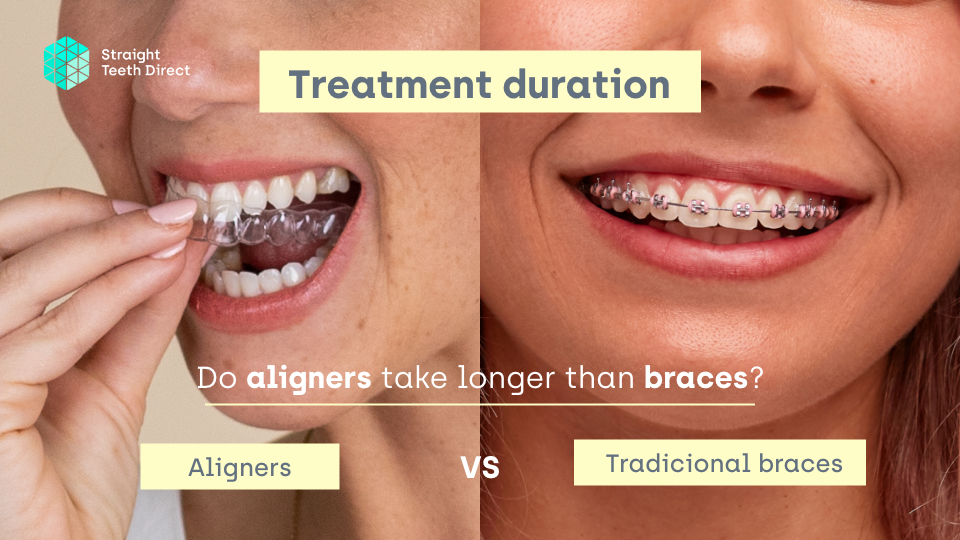
How long do braces take vs. Straight Teeth Direct™ aligners? Let’s compare!

If you have been browsing our blog library, you will already know that remotely supervised aligners can be a much more affordable option than fixed braces, but what about treatment duration: how long do braces take compared to aligners? As always, the answer is made up of a few factors, so let’s take a look at them…
| Contents
#1 Treatment location and regular appointments 1.1 Fixed braces, fixed location 1.2 At-home aligners to suit your location and progress #2 Does case severity affect how long braces take? #3 How does biological response affect treatment duration? 3.1 How long do braces take with delayed biological response? 3.2 Adjusting remote aligner treatment to biological response #4 How long do braces take vs. aligners? Let’s compare! #5 Can I influence how long braces take to increase treatment speed? |
#1 Fixed braces Vs Clear at-home aligners: Treatment locations
One of these factors is the location of your actual treatment. So, how long do braces take?
1.1 Fixed braces, fixed location
With fixed braces, every advancement in your orthodontic journey must take place at your local dental clinic, which means you need to schedule an appointment every month or so. Your dentist has other patients to accommodate within their fixed schedule, so you could be waiting for an appointment although your teeth are ready for the next treatment phase. Of course, you have a busy life of your own, so with journeys back and forth, waiting times and appointment durations, you’re looking at up to 3 hours per visit. So, finding an appointment that suits everyone’s plans contributes to a longer treatment duration. And let’s not mention those with a schedule that is ever changing making it difficult to know exactly where you’ll be and your availability during mostly a week day months in advance.
1.2 At-home aligners to suit your location and progress
With our at-home aligners, treatment and check-up locations are easy: they’re wherever you are. Thanks to the handy teeth straightening app, you can complete your monthly check-ups quickly and when it suits you best. This also means your treatment progress can be tracked in real time and your aligners sent in batches as you progress through treatment. The aligners are then sent directly to your doorstep with free express shipping in time for your next aligner switch.
#2 Does case severity affect how long braces take?
Another factor that is important to consider is the severity of a case. When it comes to treatment for severe tooth positions that require extreme movements, whether vertically, horizontally or rotationally, then fixed braces are usually preferred. By bonding brackets to the teeth and applying large pressure in the right places, teeth can be pulled down, across, or rotated into the correct position. Of course, the more complex the case, the longer the treatment duration will be.
Remote aligner treatment is an ideal option for mild to moderate cases and can solve up to 80% of cosmetic teeth straightening concerns. Less complex movements mean a less complex treatment plan is necessary, and results can usually be achieved far quicker, sometimes in as little as 5-9 months.
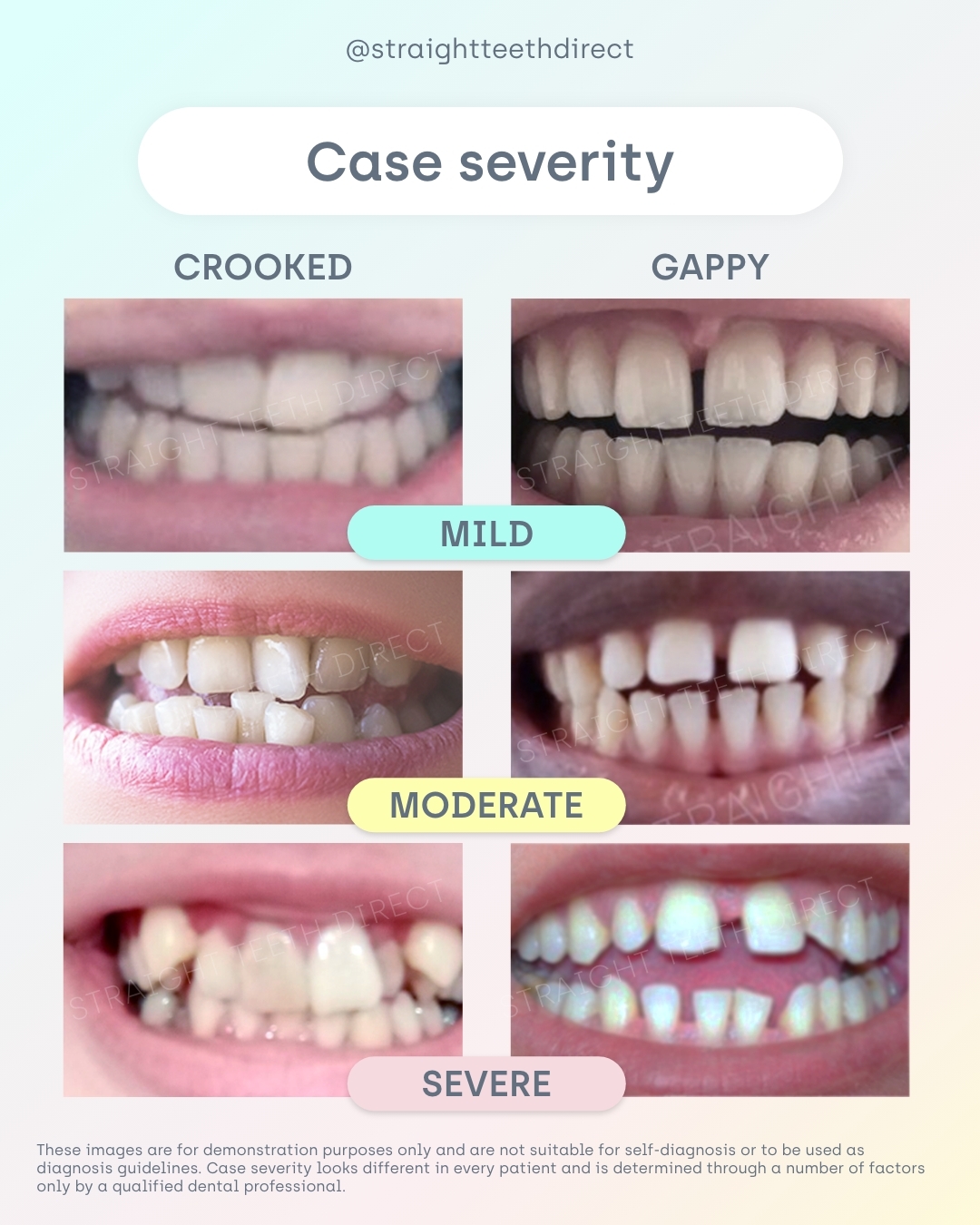
#3 How does biological response affect treatment duration?
Despite meticulous treatment planning, you never really know how efficiently teeth will respond to the treatment until you start! This is what we refer to when we say “biological response”, or how your teeth respond to treatment and the rate they will move at. It is a result of bone density, mouth and jaw muscles and previous orthodontic treatment, and it affects both braces and aligners. However, the speed at which an unexpected response is dealt with can be quite different in the two treatment methods.
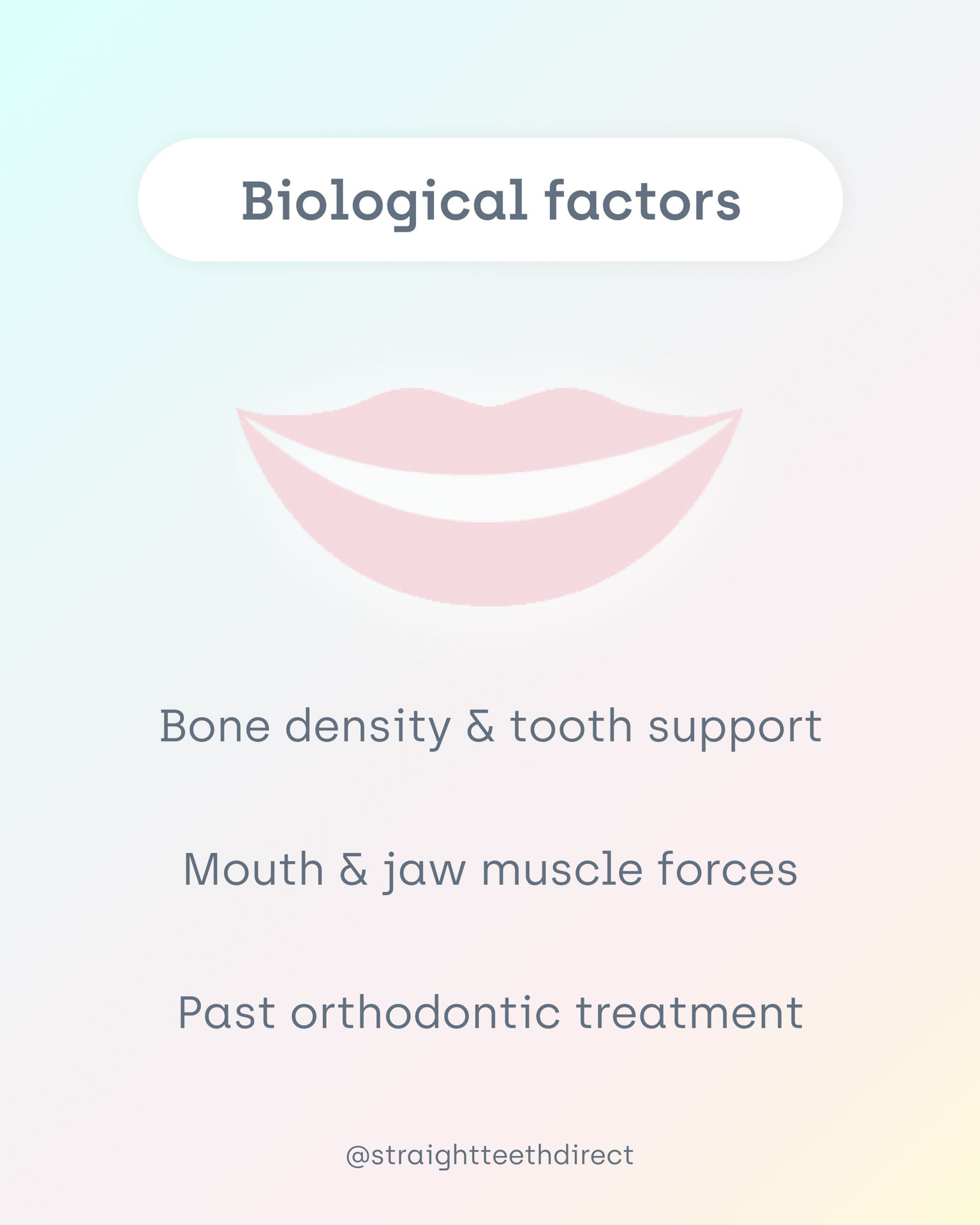
3.1 How long do braces take with delayed biological response
As you now know, braces require in-clinic attendance for any necessary changes. This means you won’t know if your teeth are responding correctly until your next appointment, at which point your dentist will have to reassess the situation and decide on the appropriate course of action. This could result in another later appointment, slowing down your treatment even more.
3.2 Adjusting remote aligner treatment to biological response
With at-home aligners and our innovative app-platform, your dentist is able to track your progress and make any necessary adjustments in real time before your next batch of aligners is produced and sent out. This way, even unforeseen changes in your tooth movement can be addressed immediately. Think of it like this: you’re driving to a destination (your new smile), but there are unforeseen roadworks (slower biological response). Luckily, you have a state of the art GPS (your virtual dentist) that can quickly recalculate your route (the treatment plan) so that you arrive at your destination with only minimal delay.
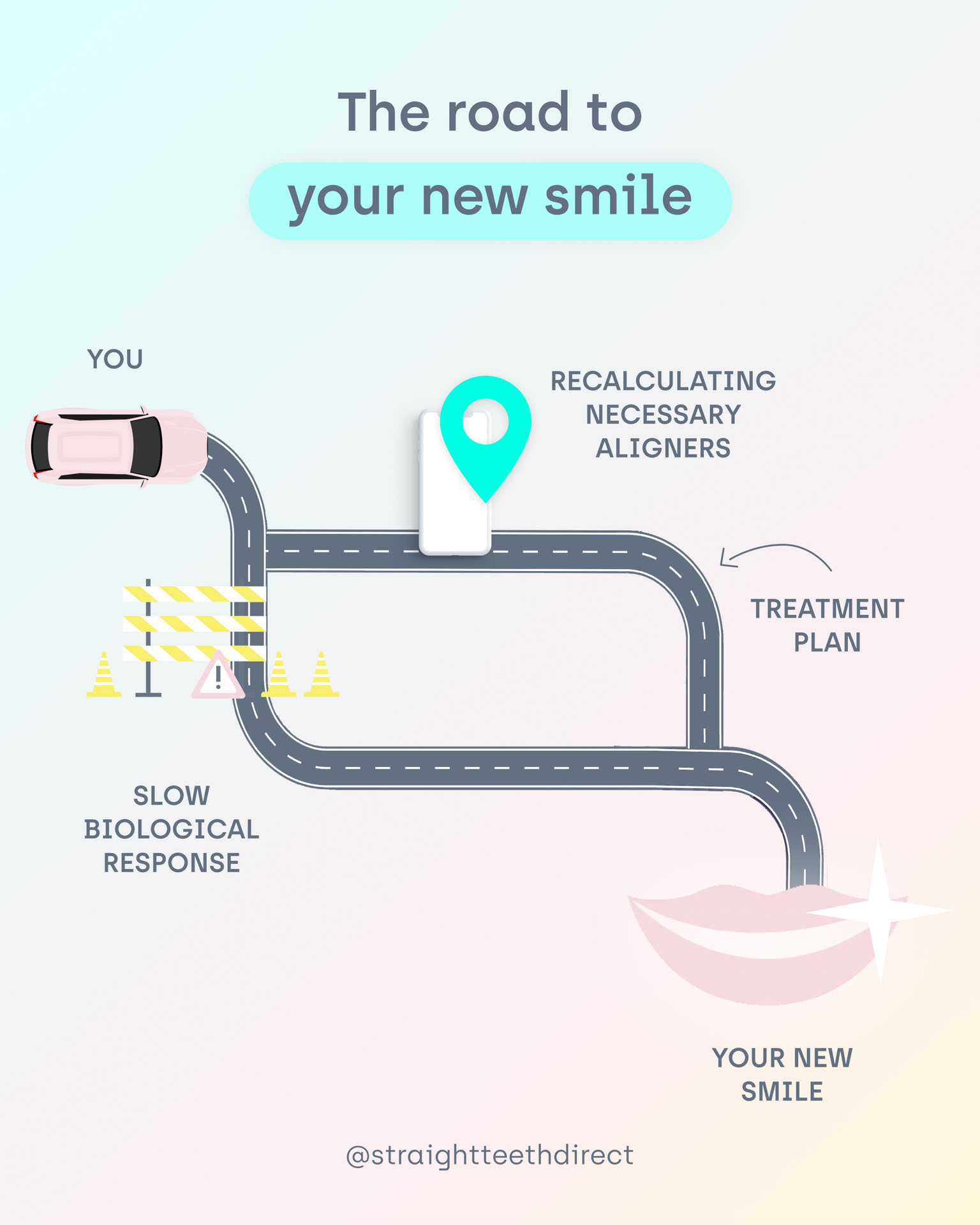
#4 How long do braces take vs. aligners? Let’s compare!
So, how long do braces take in comparison to aligners? We want numbers!
As mentioned above: it depends. No two treatments are the same, even if some cases look similar at the start. However, we can look at past data to give us a rough idea of treatment general treatment durations.
For braces, a 2017 systematic review study of several clinical trials with varying treatment severities found that the average duration for fixed braces was about 25 months, or just over 2 years. For at-home aligners, our data shows an average of 9 months: 20% of treatments took as little as 4-7 months, 53% of our users achieved their smile results in 8-10 months and only 2.8% of users were in treatment for over 13 months.
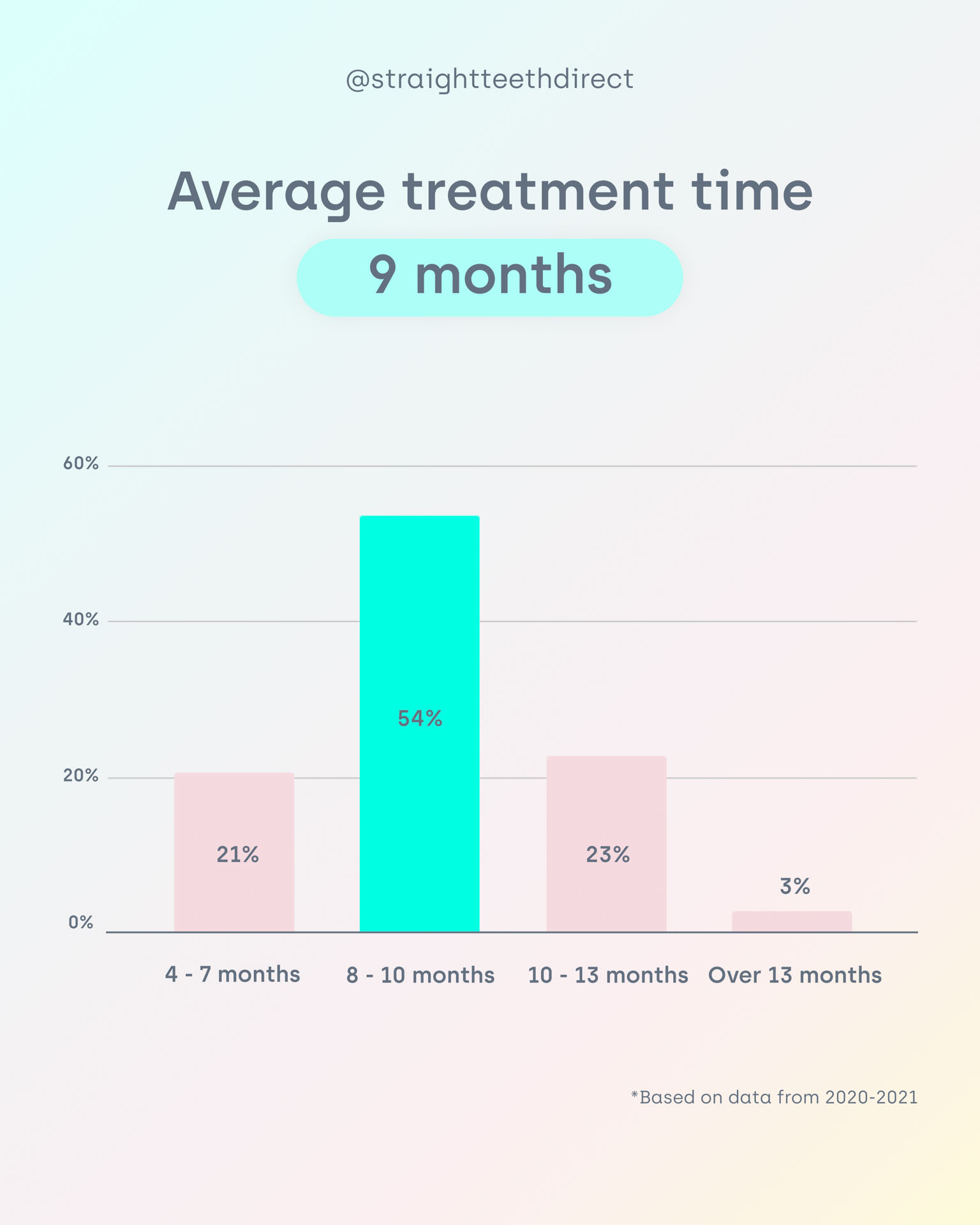
So, all things considered, at-home teeth straightening for mild and moderate cases seems to be significantly faster than the in-clinic, fixed brace alternative.
#5 Can I influence how long braces take to increase treatment speed?
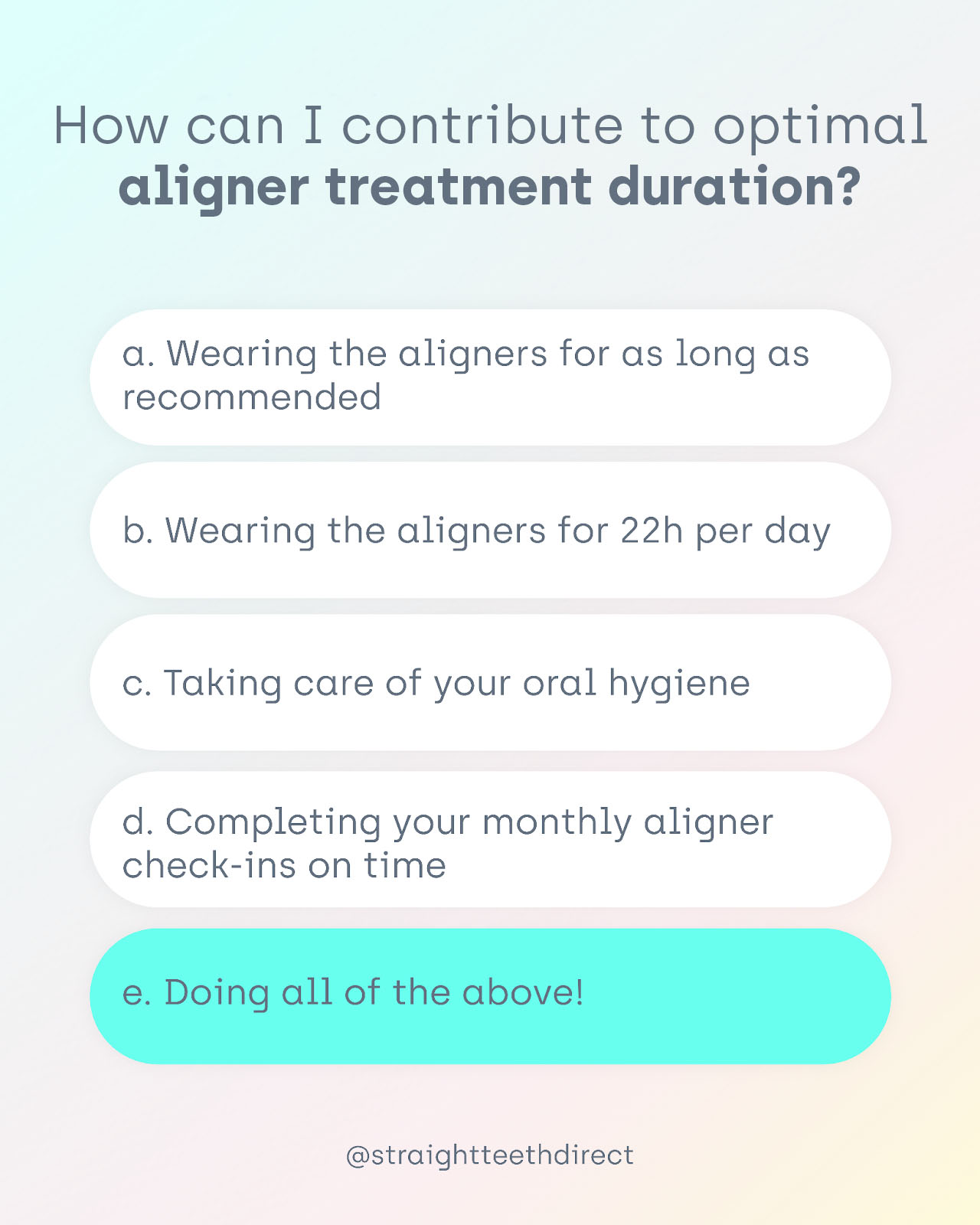
Seeing as fixed braces are entirely controlled by your in-clinic dentist, there is nothing you can do personally to affect treatment speed aside from being careful when eating certain foods to avoid the brackets from breaking.
With at-home aligners, aside from the above described case severity and biological response, there are a few other factors that you can control and that can affect your aligner treatment duration quite significantly:
1. Wearing the aligners as recommended by your dentist
As is outlined in every Straight Teeth Direct treatment plan, each set of aligners must be worn for a minimum period of 2 weeks (2 to 4 weeks) or the duration otherwise prescribed by your assigned dentist. This duration is necessary to allow your teeth enough time to move under constant pressure, and also to let them settle well in their new position. Only then can the next set of aligners properly do their job. Wearing the aligners for less than this prescribed period can result in insufficient movement, delaying your treatment and putting your dental health at risk.
2. Aligner wear – the 22h per day rule
Teeth require constant pressure to begin moving. In fact, it is the constant pressure from your tongue, lips and jaw muscles that causes them to misalign in the first place! That is why you need to give the aligners enough time every day to create the desired movement. Failure to do so, much like the above point, won’t give your teeth the necessary amount of time under pressure to move successfully, putting both your treatment duration and oral health at risk.
3. Oral care – brushing and flossing matters
While this may seem obvious for oral health reasons, how does it relate to straightening? Before starting any orthodontic treatment, your teeth need to be in good health to ensure safe movement. During treatment, not cleaning your teeth properly can result in excess plaque buildup, which can harden and inhibit certain tooth movements so it is essential that you keep brushing and flossing after each meal to ensure maximum cleanliness.
4. Keep up with the monthly virtual reviews
Not only are these in-app check-ins much more convenient than traveling to a dental clinic, they are also very important. These updates allow your dentist to see how your treatment is developing and your pictures can be compared to the computer model for your programmed tooth movement. Only once your status has been confirmed can your next batch of aligners be produced and sent out to you. If you frequently forget to complete these check-ins, your dentist won’t know if you are ready for the next aligners, delaying production and, as a result, your treatment.
So, while there is no shortcut to getting your best smile, the easiest way to guarantee a hassle-free, easy transformation is to stick to the guidelines in your Straight Teeth Plan and to your assigned dentist’s advice!

Still thinking about it?
Fill in your email to receiveyour free guide!


















